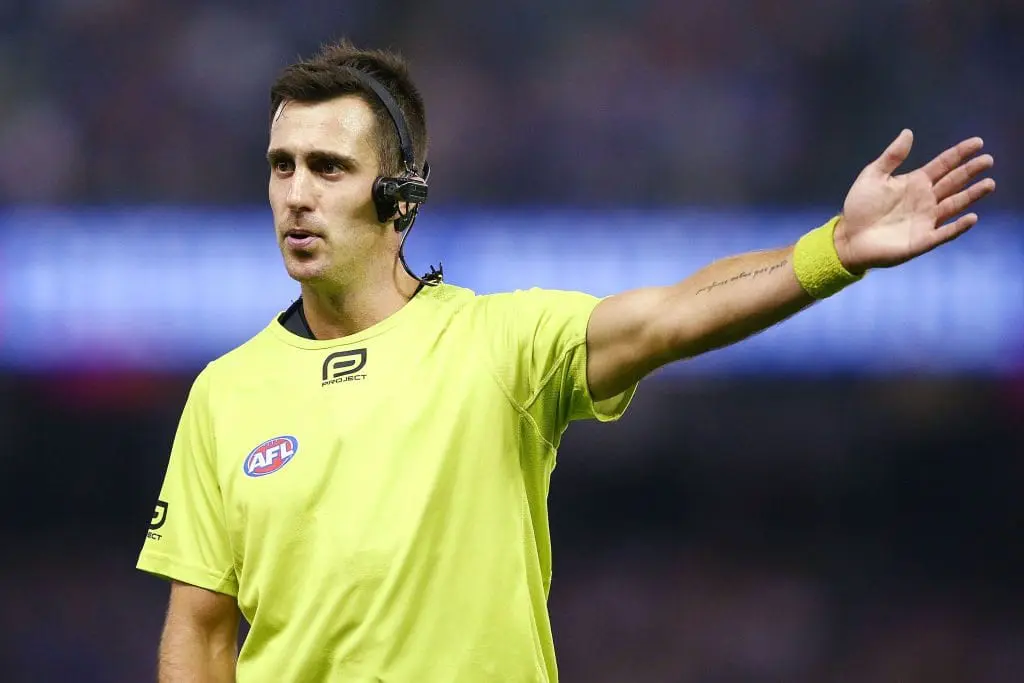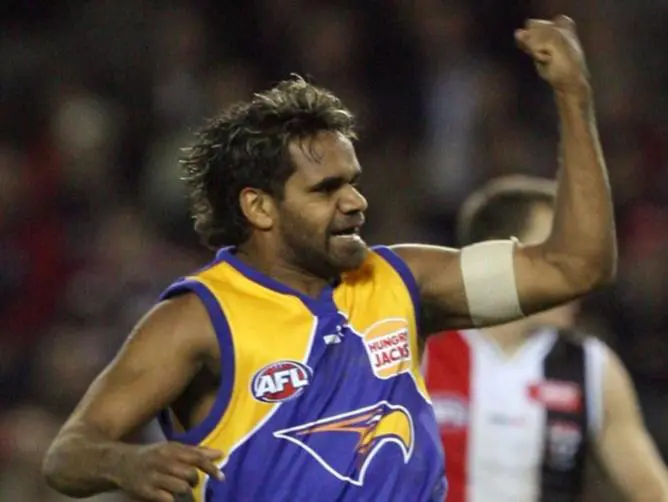Regrets are an inevitable part of life. They come with the territory of breathing and are a part of the unwritten deal we all sign for the right to exist.
Although some contrition can feel enormous – such as the misery born when a relationship breaks down or after committing a far more criminal act – others are forgotten in the blink of an eye.
In terms of the unpredictable game of football, there are a plethora of scenarios that have made or broken careers.
What if your side had picked a different player from a certain draft?
What if your star spearhead had kicked straight when it mattered?
What if the bounce of a Sherrin was slightly more predictable?
Well, for fans of every creed, we have sought to answer the question that has rankled you for years and kept you up at nights for far too long.
We can't promise that we won't open old wounds, as let's face it, that is the entire point of the exercise.
PART ONE: Adelaide, Brisbane Bears, Brisbane Lions, Carlton
PART TWO: Collingwood, Essendon, Fitzroy, Fremantle
PART THREE: Geelong, Gold Coast, Greater Western Sydney, Hawthorn
PART FOUR: Melbourne, North Melbourne, Port Adelaide, Richmond
However, if we can help you find closure by looking at the facts and asking what would have happened had the doors slid the other way, then we have done our job.
As always, feel free to critique our traipses, as we are tipping some of you are unlikely to enjoy some of the conclusions we have drawn.
With the first four instalments now behind us, here is final entry in a series of the game's greatest ‘what ifs' since 1990.
West Coast
What if Ashley Sampi had been paid a free kick during time-on in the 2005 Grand Final?
As a supporter of a side that is the current holder of an inordinately lengthy premiership drought, the last thing I want to do is to continue stirring up any previously long-suffering bloods diehards.
However, like a punter ordering the last dim sim in the Bain-marie after a night on the tiles, I have gone against my better judgement, and I am more than prepared for the world of pain I am about to enter.
Those that prefer reality will know that when the final siren sounded at the Melbourne Cricket Ground on the 24th of September 2005, 72-years of confusion, contusions, displacements and devastations for red and white barrackers were eased in an instant.
But as has been repeatedly stated within this series, sometimes alternative timelines are much more fun to navigate. And in the case of West Coast, that can end up more profitable too.
Those of us who witnessed that day's events unfold may have seen Sydney defender Leo Barry levitate across a pack of players to grab the Sherrin during time-on and then proceed to shake down thunder from the afternoon sky.
Still, what may have escaped many was the fact that for Barry to take not only the deciding mark but also his place in footballing immortality, it was necessary for one of his bloods brothers to clip the wings of a high-flying Eagle first.
Following his grab, and then eventually the siren, ‘Leaping Leo' was mobbed by a bank of Swans, but interestingly, the first man to meet the Swans' saviour did so with red hands.
SEE ALSO: What if 'Bomber' Thompson was shown the door at the end of 2006?
Should you study the now famous image below, you will see a pack of six-players clad in the uniforms of two-teams. You will also bear witness to not only the Deniliquin born defender mustering an eyes closed assault on the leather but you will also notice an infringement on the right side of the contest.
Tadhg Kennelly started out his secondary career as an AFL footballer in 1999 after trading a spherical O'Neill's ball for the oval shaped Sherrin. The man from Country Kerry would be forced to wait a further pair of seasons before making his big-league debut due to the time it would take to truly adapt to the pace, the tactics, the positioning and the rules of his adopted code.
However, by the dawn of Grand Final day in 2005, Kennelly had laced the boots for the Swans on exactly 100-occasions, so even though he was forced to learn on the run during the early years of the new millennium, he would have had more than just a fair idea of how to conduct ones self in the congestion of a marking contest by 2005.
According to the AFL released document ‘The Laws of Australian Football', the Irishman's clenched right hand had the ability to loosen his club's grip on the premiership trophy.

Still, should you turn your eyes to rule 17.5.2 in said document you will find that although Kennelly fell foul of the law after ‘holding or blocking an opposition player', the former Gaelic footballer did initially pass the open-ended spirit portion of the ruling – something that seems wildly incongruous.
In the words of the document, Kennelly was permitted to enter the aforesaid contest due to holding the sole objective of spoiling West Coast's Ashley Sampi from marking the ball.
SEE ALSO: What if Ablett's shoulder remained intact in 2014?
Many believe that Australian Rules Football's plethora of rules and regulations that remain both ambiguous on the surface and at depth appear as such due to the Irish roots of the code's creators, and with the transgressor in this instance holding compatriot status, it certainly adds a Kelly-green tinge to the narrative.
Despite this, as the then 24-year-old held a fistful of the Eagle's forward's guernsey, a free-kick within Sampi's forward arc could, and possibly should, have been paid.

Now, most footballing fans abide by the colloquial belief that umpires tend to ‘put their whistles away' during the dying stages of tight and meaningful matches, but what if the umpire on the spot had blown his whistle and stipulated that Kennelly had in fact been at fault?
Had the man in white – in this instance, Scott McLaren – who was placed on the correct side of the contest had used an eagle eye and extended his left arm out, Sampi would have become the first player in AFL/VFL history to attempt an after the siren shot for goal to win a premiership.
Before we delve further into this flip side of the coin storyline, it would first prove salient to flesh out the backstory of the man that could have proven the Swans' primary antagonist 17-seasons ago.
Having been taken with the sixth pick of the 2001 ‘Super Draft', it was clear from the outset that the West Coast Eagles held Ashley Sampi in high esteem. Although the Western Australian livewire would rise to unparalleled heights in 2004 to claim himself a new car, by time-on in the next season's decider, Sampi was yet to repay his club's faith.
2005 had seen the South Fremantle product slip in almost every measurable statistic from the year before. Not only had Sampi found the football at an average of 9.1 times per game that season (down marginally from 9.3 in 2004) but his potency in front of goal had fallen off the proverbial cliff.
In his first three-seasons in the league, the Trinity College scholar had recorded yearly tallies of 2.1, 31.18 and 32.15 when shooting for the big sticks. However, by the time the day that is currently under the microscope had arrived, Sampi had produced 20.24 across 18-appearances – a total he would not add to in reality.
SEE ALSO: What if the Giants landed 'Buddy' at the end of 2013?
Across the four-quarters of the 2005 decider, the at times silent Sampi had produced eight kicks, one handball and his scorebook had remained unmarked.
However, with a seasonal mean of producing a scoring shot every three-and-three-quarter possessions, optimistic Eagles backers would have claimed he was due.
With West Coast sitting four-points in arrears of their eastern seaboard rivals by the time that McLaren could have awarded Sampi his redemptive shot, only a goal would have seen the result altered.

Still, with a conversion rate of 45.45% for the season in shots that registered a score, it would have taken a fortuitous flip of a slightly weighted coin for the blue and gold guernsied forward to have claimed the cup for his side in an analytical sense.
But as said attempt at goal would have taken place from around 30-metres out from the Ponsford end goals, and on an exceedingly favourable angle for the right-footed Sampi, I would have backed the previously ineffective Eagle to have stolen Sydney's drought breaking prize.
SEE ALSO: What if Jason Dunstall didn't insist on Alastair Clarkson's appointment?
Some may argue that the Sampi's odds of splitting the sticks would have diminished further due to the pressure that he would have been placed under, but the then 21-year-old had cold-blooded form when it came to securing positive results for his side once sirens had sounded.
In Round 11 of the 2003 season, a then teenaged Sampi, sporting a set of tight cornrows, slotted a goal after time had elapsed in just his 14th game of AFL football.
Yes, this goal may have been to tie a game rather than win it.
Yes, there was no trophy on the line that day.
And yes, said shot took place incrementally closer to goal in front of a parochial home town crowd.
But as he held a 100% strike rate from such a position by the time he would have stood at the top of his mark in 2005, my stance in backing him to alter history has only become further entrenched.
Across the length of Ashley Sampi's career – 2002 until 2006 – West Coast and Sydney met on 11-occasions with the ledger standing at 6-5 in the Perth side's favour.
Across these contests, the average winning margin sat at a meagre 16-points per contest, with both sides claiming flags at the expense of the other
However, had Scott McLaren decided that he had absolutely no desire to ever venture into South Melbourne or pockets of the harbour city ever again, this 50-50 split in late Septembers of years gone by could have become much more one-sided.
I am sure that my decision to expound on this possible plotline could realistically see me barred from multiple establishments within the 3205 postcode, but the cup still remains yours, Swans fans, as there is quite literally nothing more I, or West Coast fans, can do apart from hypothesize.




























